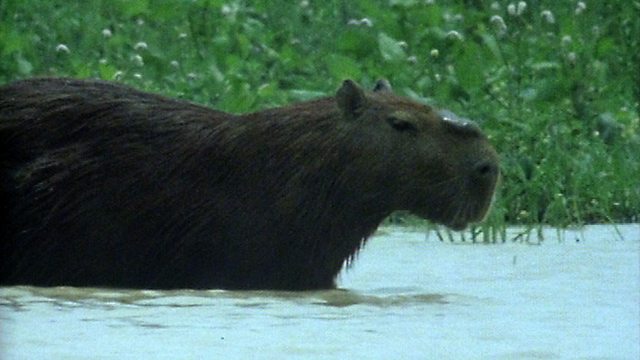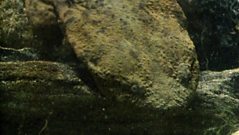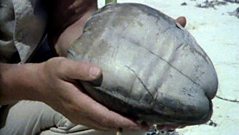
Getting ahead
The head design of capybara and giant otter suits Amazon River life.
The Amazon has no great lakes on its course so even in its middle stretches it still carries mud from the Andes. Yet the Rio Negro which joins it is clear because it comes from the north-west where the rocks are hard and bare. The two rivers flow alongside one another in the same bed, scarcely mixing. As well as sediment they also carry a lot of nutrients, so life on their banks flourishes. Herds of capybara wade through the shallows cropping the plants. With webbed toes, they are well adapted to swimming. They also have their eyes, ears and nose at the top of their heads, making it easier for them to see, hear and smell while remaining mostly submerged. Giant otters have a similar head design but often lift themselves out of the water to get a better view of their surroundings. At six feet long, Amazonian otters are the biggest and best swimmers of all the world's otters. They have large webbed feet, a flattened tail and sensitive whiskers. Pairs lay claim to a stretch of river by making territorial patches on the bank and marking them with their own smell.
Duration:
This clip is from
Featured in...
![]()
Βι¶ΉΤΌΕΔ Nature
Be captivated, informed and inspired by the world's wildlife.
More clips from Sweet Fresh Water
-
![]()
Fishing spider
Duration: 01:17
-
![]()
Hellbent on supper
Duration: 01:21
-
![]()
Acrobatic spawning
Duration: 01:07
-
![]()
Waterfall creatures
Duration: 01:05
More clips from The Living Planet
-
![]()
Ocean Drifters—Worlds Apart
Duration: 01:20
-
![]()
Snare of silk—The Baking Deserts
Duration: 01:48
-
![]()
Furnace flora—The Baking Deserts
Duration: 03:46
-
![]()
Ships of the desert—The Baking Deserts
Duration: 03:17










